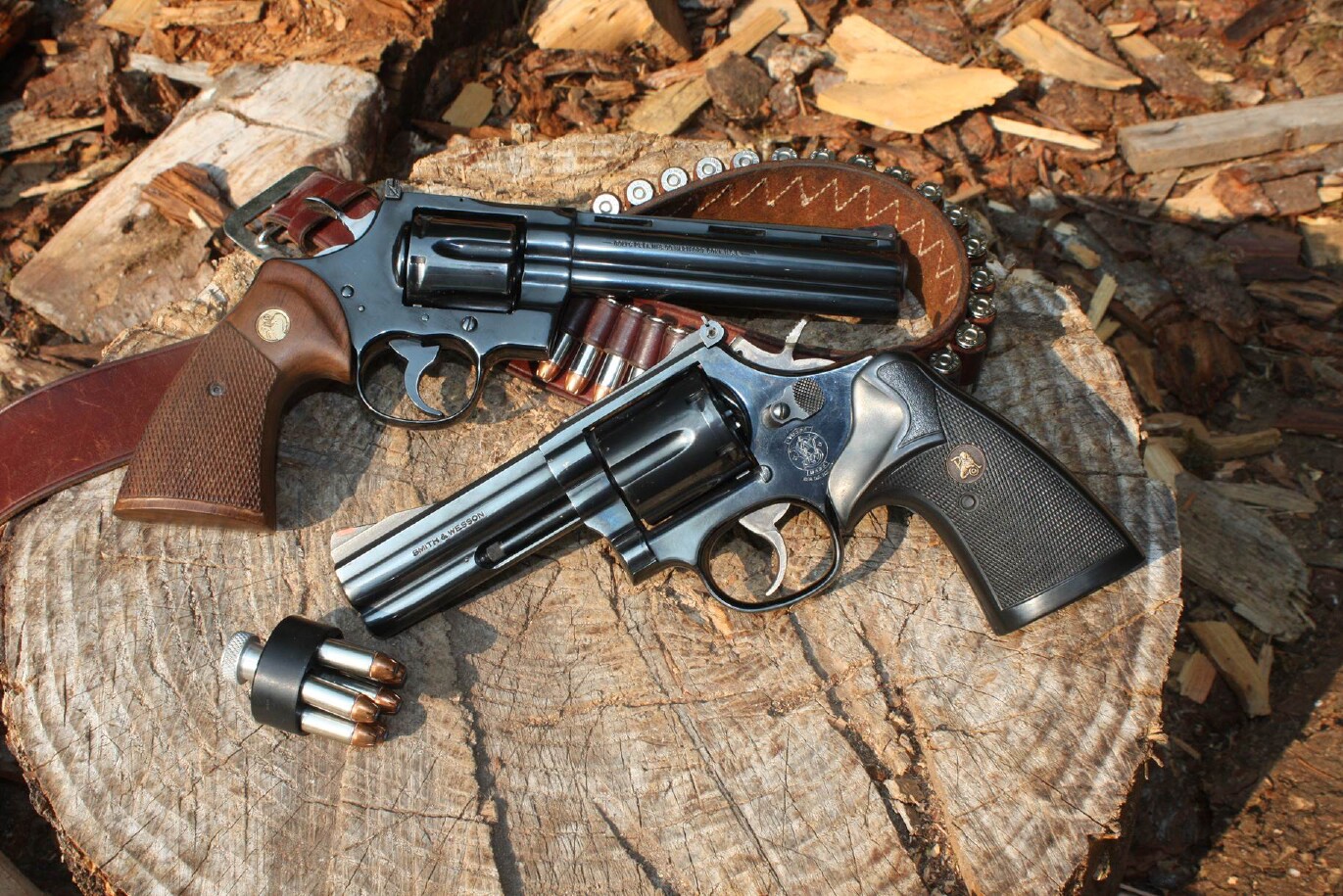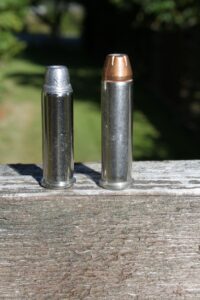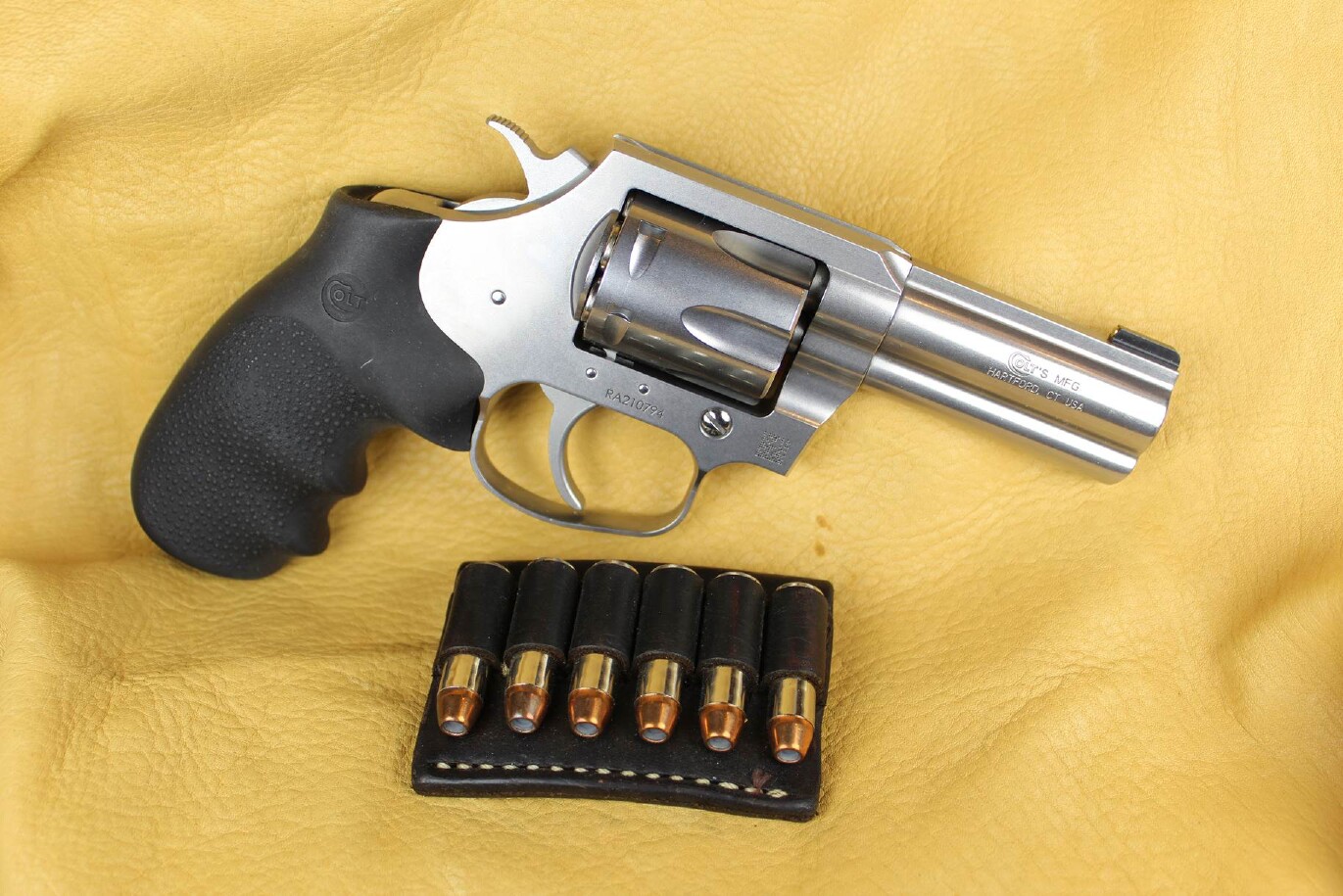
By Dave Workman
Editor-in-Chief
Introduced in 1935 as a cartridge going a step beyond the .38 Special in terms of performance, the .357 Magnum—the first of the “magnum” handgun calibers—and it quickly gained a reputation for its ability to deliver a sledgehammer punch.
Among its early admirers was a then-Army lieutenant colonel named George S. Patton, who bought one while stationed in Hawaii in October 1935. Historians say he considered it his “killing gun” for the battlefield, though he is more widely known for packing a single action Colt .45.
The .357 Magnum case is essentially a stretched .38 Special case, extended to 1.290 inches to prevent it from being chambered in an older model .38-caliber revolver, which could not handle the pressure of the magnum round.

While it won admirers in the law enforcement field, the .357 Magnum has gained far more prominence among civilians. They have adopted it for all kinds of uses, ranging from personal and home protection to hunting, silhouette shooting and long range competition. Long story short, the .357 Magnum is an amazingly versatile cartridge, but is it the “perfect” handgun round? After carrying various handguns chambered for the .357 Magnum over the years, I’m inclined to say “maybe so.”
For starters, it has a controllable recoil in all but the smallest hands using the smallest guns chambered for it. I know one guy who stopped a brutal, potentially deadly attack in a convenience store with three rounds fired at virtually point blank range with a terminal outcome.

I’ve known others who killed deer, black bears and even an elk with .357 Magnum handguns. I own at least three revolvers including a marvelously accurate Colt Python in this caliber, and have settled on a couple of handloads which, while not pushing the top end of the pressure scale, still deliver the goods. My two favorite propellants are Hodgdon’s H110 and Alliant 2400. My bullet preference is for either a 125- or 158-grain projectile, lead semi-wadcutter or jacketed hollowpoint. Hit deer-sized game with either of those pills and it will definitely get their attention.
There are so many propellant choices available it’s hard to recommend one over another, but the two powders I’ve named are at the top of the heap. Find a copy of Hodgdon’s Annual Manual or a loading manual from your favorite bullet maker and you’ll have so many data options it will be impossible to try them all without an unlimited budget and several weeks of free time.
Honestly, what makes the .357 Magnum a popular choice, even in this day of sizzling semi-autos with large magazine capacities and greater firepower, is its versatility. One can find bullet weights starting at 110 grains and work up from there to 170 grains, all capable of great performance against steel plates, car bodies and engine blocks, and live tissue. For the average person, that’s all anyone could ask for.

Every domestic ammunition company offers at least one or two loads, and the major manufacturers—Winchester, Federal, Remington, Sig, Speer and Hornady—have an array of choices to address literally every imaginable need.
And you can find ammunition for a .357 Magnum just about anywhere.
When one gets into the handloading arena, all bets are off. It all depends upon how hefty your gun is, and how much recoil you care to absorb. I’ve fired some loads that are easily manageable, and others that seemed to be pure hell in a wheelgun. Once using my Python, I managed to hit a duck decoy at just over 250 yards, but shooting at live game at that distance is a habit I never got into.
On the trail, I occasionally carry a vintage Smith & Wesson Model 19 with a 2.5-inch barrel stoked with 158-grain JHP handloads. I also typically have that gun in an old Bianchi Shadow holster when I’m cutting firewood, since the area where I cut on national forest land is known for increased black bear activity in recent years, and the mountain lion population has also increased. A few years ago, a cougar attacked two guys who were mountain biking on a logging road a few miles from my place. One man was killed and the other mauled pretty badly. Where I live, that’s a pretty strong warning to be prepared when going off the pavement.
Back in the early 1930s when the .357’s saga began, people were experimenting with stoutly-loaded .38 Specials. A heavily-charged .38 caliber load was dubbed the “.38-44” to be fired in larger-framed revolvers designed to handle .44-caliber cartridges. Thus, the .38-44 was a prelude to development of the .357 Magnum, initially introduced in the larger-frame revolvers. For example, Patton’s gun with a 3.5-inch barrel, was built on what today would be considered Smith & Wesson’s “N” frame, and that’s where such revolve stalwarts as the S&W “Highway Patrolman” series can be found. Likewise, the Colt Trooper is a fairly beefy sixgun, and when you talk about models from Ruger, perhaps the most popular of the lot is the GP100 double-action and the Blackhawk single-action.
Sure, there are lighter guns. The S&W Model 19 became very popular in the law enforcement field in the late 1960s through the 1980s and it was favored by sheriff’s departments especially in rural western counties. Smith & Wesson, Charter Arms, Taurus and Ruger all offer lighter-framed .357s including the 5-shot J-frame model carried by my aforementioned acquaintance, and they are well-built but when you press the trigger, you know you’ve just touched off a fairly powerful handgun.
It would be pure speculation to suggest more revolvers are chambered today in .357 Magnum than any other revolver cartridge. But it would not be speculation at all to say the .357 Magnum is likely the most popular revolver round among the growing number of handgun owners because of its versatility.
If I were limited to just one handgun, it would be difficult to choose a better one than a .357 Magnum. Sure, the .41 and .44 magnums are more powerful and, along with the .44 Special, .45 ACP and .45 Colt all make bigger holes, but for its ability to cover the bases, the .357 Magnum holds the edge, in my opinion. It may not be a “perfect” cartridge, but it comes darned close.



